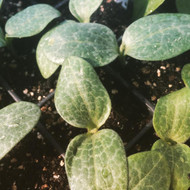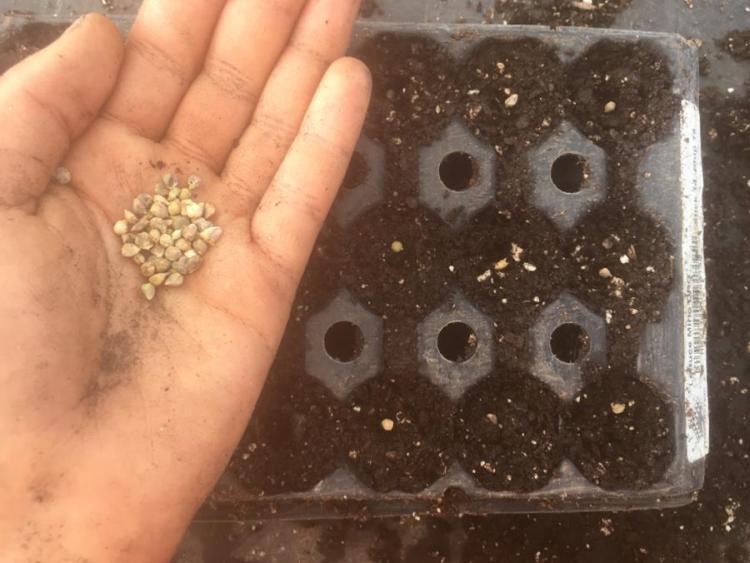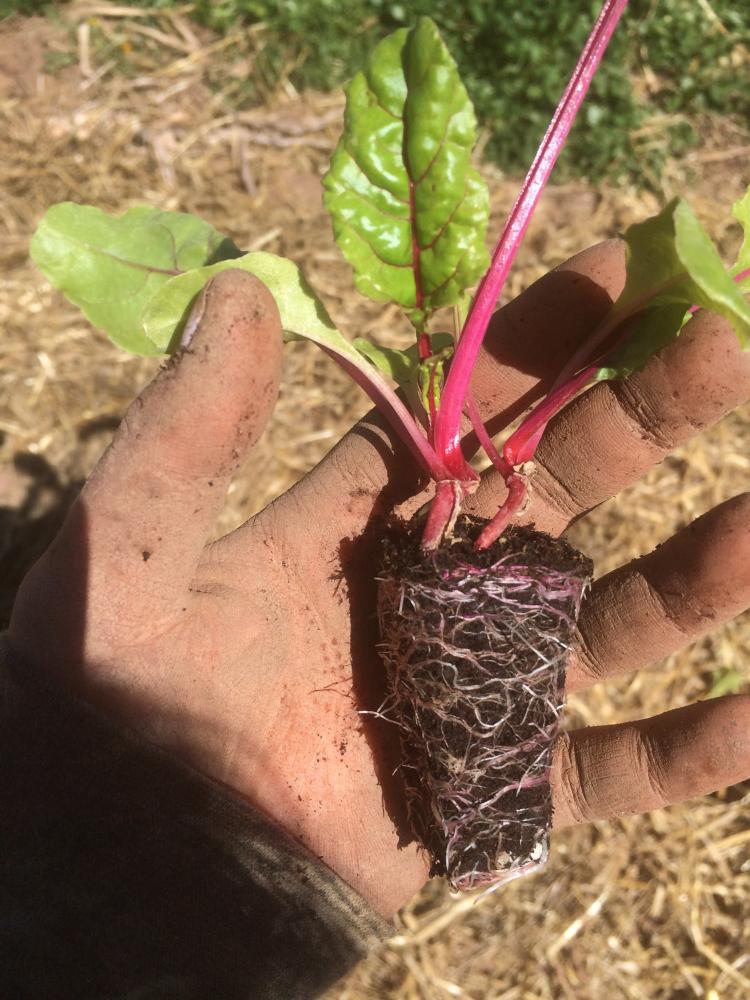
Japanese Garden Tools Vs. American: What’s the Difference?
You may have seen Japanese gardening tools popping up more in stores and online. Sure, they’re… Read More

I’ve worked on several farms over the last three years, most recently at the Carversville Farm Foundation in Pennsylvania. It’s hard work, some of the hardest work around, but the rewards are great. There’s nothing that beats coaxing life from a seed–it’s direct, it’s manual, and it’s a combination of scientific planning and faith in nature.
 There are a few ways to create transplants. The conventional practice is using plastic planting trays, also called flats. Flats are filled with cells (empty cubes) for the soil and seed to live in. They come in all different sizes and are referenced by their total cell number. The lower the number, the bigger the cells; the bigger the number, the smaller the cells. You would use 36’s for cucurbits, which grow fast and have large seeds, while the more crowded 128’s can house slower growing brassicas.
There are a few ways to create transplants. The conventional practice is using plastic planting trays, also called flats. Flats are filled with cells (empty cubes) for the soil and seed to live in. They come in all different sizes and are referenced by their total cell number. The lower the number, the bigger the cells; the bigger the number, the smaller the cells. You would use 36’s for cucurbits, which grow fast and have large seeds, while the more crowded 128’s can house slower growing brassicas.
Most farmers create their own soil to plant with. Usually this starts with an organic potting soil that can be amended with natural materials such as worm castings, green sand, mycorrhizal inoculant, perlite, even sand. For example, Vermont Compost Company uses sphagnum peat moss, coconut coir, vermiculite, kelp, blood meal, and bone meal to create their Fort Vee mix. This type of soil is ideal as an all-purpose mix for hanging plants, soil blocks, trays, pots, and direct seeding.
Here is a great recipe that you can use to make your own garden soil:
It is good to mix the dry ingredients and then add water, until the consistency is damp, but not super heavy, wet soil. It’s a messy process that can be done on a tarp or in a wheelbarrow. Although you can use rakes or other tools, I prefer hand mixing.
Then comes packing the trays. The key to filling the cells is insuring the mixture is packed well. When testing if a cell is adequately filled, your finger should meet resistance from the soil–the soil should not be filled with air. I like to compress the full tray by pressing a second tray down on top of it; the end result should be soil packed as firm as a mattress.
 Next comes dibbling: making a hole for the seed to be dropped into. Official dibblers are sold, but you can easily use a pencil or pen instead. Seed packets offer instructions on different specs such as planting depth, which vary from seed to seed, but as a general rule of thumb, the size of the seed is the depth you should plant it. If you are planting rows of seeds, it is important to maintain a line with twine so you can maintain spacing in a crowded plot.
Next comes dibbling: making a hole for the seed to be dropped into. Official dibblers are sold, but you can easily use a pencil or pen instead. Seed packets offer instructions on different specs such as planting depth, which vary from seed to seed, but as a general rule of thumb, the size of the seed is the depth you should plant it. If you are planting rows of seeds, it is important to maintain a line with twine so you can maintain spacing in a crowded plot.
The last step is to cover your seed, which I like to do by pinching the soil together to close the seed hole. Later on, after the baby plants have appeared, you can test whether they are ready for the field by lightly tugging on the stem to see if the roots hold the soil. If you cannot get the plant out of the cell, it probably means it needs more time.
 Using plastic trays is cheap and time efficient, yet they raise issues among organic farmers–over time, they can become brittle or broken, and thus using them is not a sustainable practice. Another negative aspect to this form of seeding is that the seedling can sometimes run out of space in its individual cell and become root bound–this occurs when the seedlings are left in their trays too long, and can stunt the plant’s development. Recently, makers have produced biodegradable seed trays that degrade once they are placed in the soil. This allows the seedling to settle in nicely into the soil without transplant shock, as well as avoiding the roots getting root bound.
Using plastic trays is cheap and time efficient, yet they raise issues among organic farmers–over time, they can become brittle or broken, and thus using them is not a sustainable practice. Another negative aspect to this form of seeding is that the seedling can sometimes run out of space in its individual cell and become root bound–this occurs when the seedlings are left in their trays too long, and can stunt the plant’s development. Recently, makers have produced biodegradable seed trays that degrade once they are placed in the soil. This allows the seedling to settle in nicely into the soil without transplant shock, as well as avoiding the roots getting root bound.
One way to avoid both these issues when growing transplants is by using soil blocks. In this process, different sized hand machines, such as this Soil Blocker Kit, produce cubes of soil to house the seed–the same concept and steps as using flats, but without the plastic. Many farmers, particularly those with an interest in sustainability and organic values, have been exploring this approach, and find that the benefits (no root binding, no petroleum, simply placing the soil block directly into the ground) outweigh the initial cost.
The other method of seeding, called direct seeding, simply means placing the seed directly in the environment where it will grow to adulthood. This can be done on a large industrial scale–many corn fields you drive past are seeded by a tractor attachment called a drill seeder. But direct seeding also works very well on micro scale, such as in a small garden. Using a seed line and a hand trowel to carve a shallow trench, you can easily drop and cover many types of plants–arugula or basil, for example–into your soil.
I’ve noticed with many varieties of plants, from kale to radish, the first sprouted leaves appear very similar: little round clover-like leaves. This is called the cotyledon—a universal plant term for the first two leaves that emerge from the seed. It’s my favorite new word that I’ve learned this year–even more useful, however, is the fact that the second set of leaves to emerge is usually more telling of the plant’s true identity.
With seeding comes great responsibility! Whether you are working for yourself or for hire on a farm, or tilling your home garden, knowledge and planning will help you determine the best path for your little green babies to greet the world and grow strong. Transplanting can help your seedlings avoid many of the dangers that befall these tender plants–weather, pests, etc., but be aware that closed environments can also affect some plants adversely. Fungi can be present in greenhouses and accompany your seedlings to their outdoor destinations, with unfortunate results for neighboring plants. Do your research, and seek out advice.
We hope your growing season is fruitful!